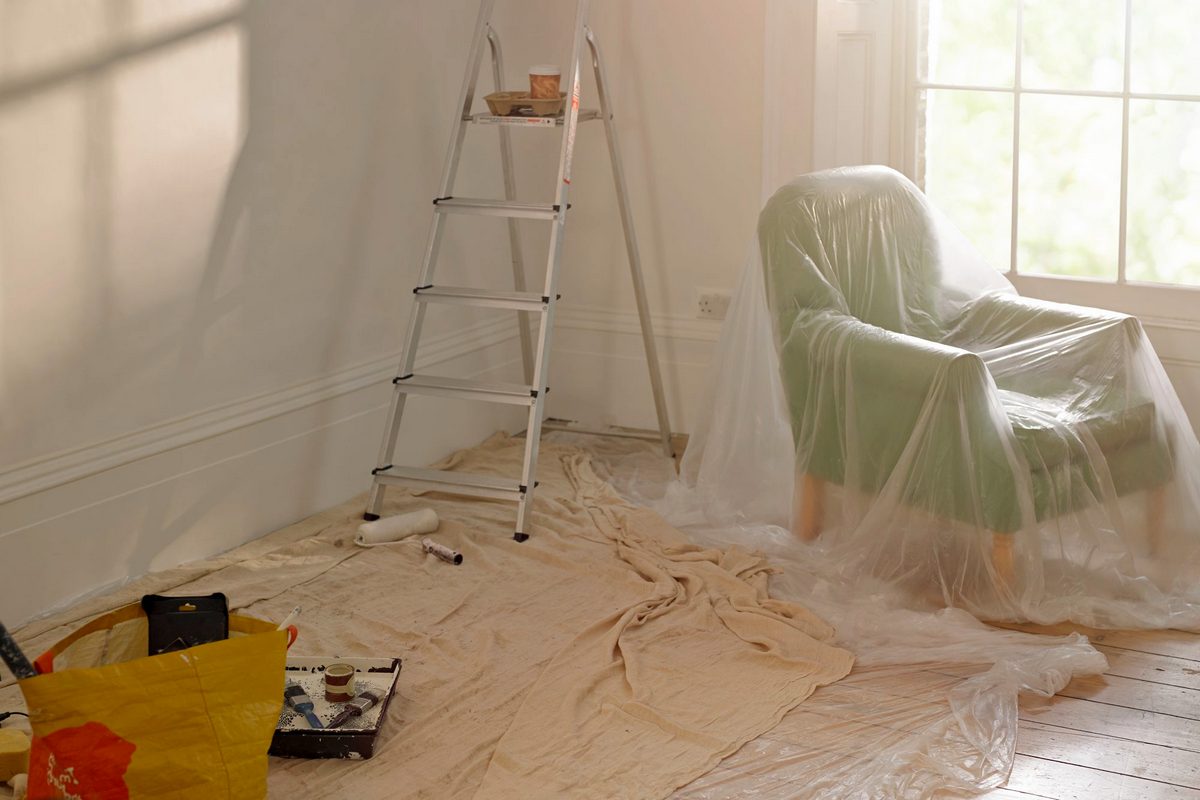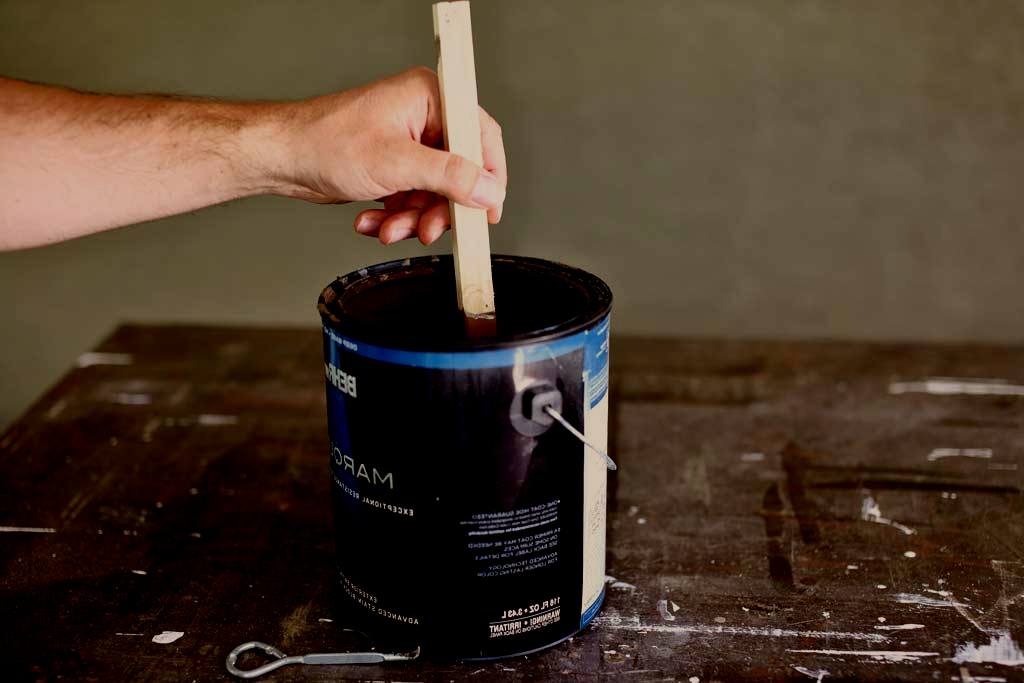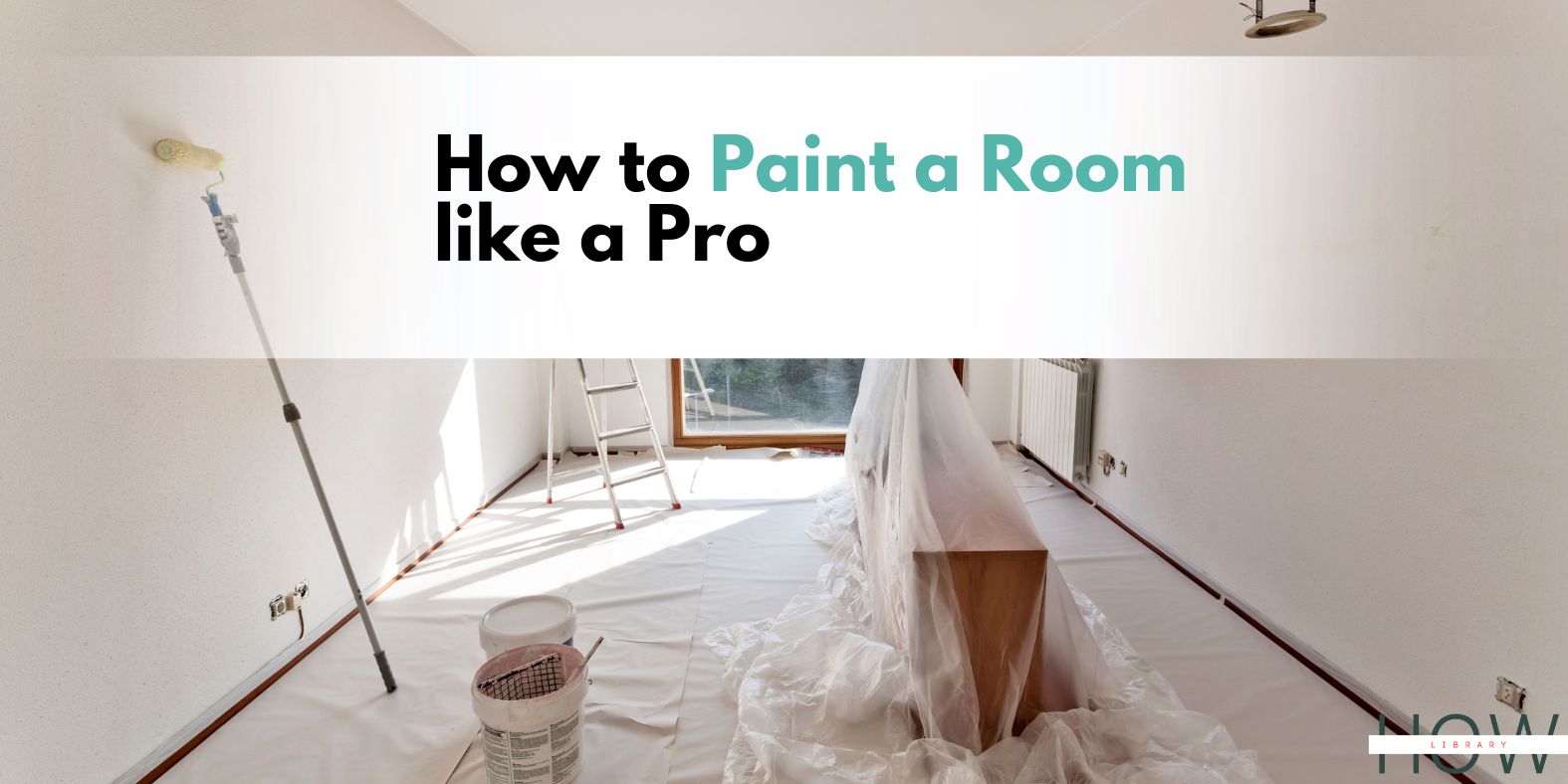Painting a room is one of the simple and inexpensive ways to freshen up your home. A fresh coat of paint will not only rejuvenate your space, but also protect your home from daily wear and tear, and also increase its value. Painting is a common DIY home project. However, it can become a nightmare if not done right. You must research properly and follow the right steps to ensure a successful paint job. Take your time to properly prepare the room and surfaces, including selecting the right paint for the project, and using the appropriate primer.
This will ensure the finished product looks great, and the painting process will be easier and more efficient. With proper planning and basic supplies, such as paint brushes, rollers, drop cloths, painter’s tape, you’ll be able to transform a dull room into a vibrant space you will love for years to come. With careful execution, anyone can paint a room without creating a mess.
If you’re ready to transform your room with a splash of color, you’re at the right place. This post will show you the steps to execute your paint job effectively, including tips on how to maintain your equipment, how to avoid drips and roller marks, and how to clean up after the job is done.
How To Paint A Room Without A Mess
Create A Plan
Planning comes before anything; you have to plan your painting job before you begin execution. Painting is similar to cooking; you should read and understand the recipe first before adding the ingredients to the pot. If not, you’ll end up missing important components while you’re already halfway through the process.
When it comes to planning, you must identify the areas you want to paint. Does your ceiling need a refresh and so on; understand what your painting job demands before getting the supplies. You should also know your budget, so your supplies are within your purchase power.
Select The Right Color
You have endless options for color shades; are you looking for a cool or warm undertone? Do you want to have a serene and neutral home? Is your room space suitable for a bold accent color? Do you want to make a statement with a jewel tone? And so on. If you have an idea of the type of shade you want, you can easily make the right decision when choosing your paint color.
It’s important to understand that paint colors look different in different lighting conditions. Natural light and artificial light can change the overall color of the room. It’s important to pay attention to the undertones of the paint color you select. Most stores will allow you to purchase sample cans, these small cans of paint are a great way to test the color in your room before committing to a larger purchase. It also gives you the ability to see how the color changes during the day as the light changes.
And also consider the finish of paint you want, whether it’s flat, eggshell, satin, semi-gloss or gloss. Each finish will have its own level of durability and sheen.
Painting A Sample Swatch
After getting your sample cans, the next thing to do is paint swatches on your wall. This will allow you to see how the paint will look on your wall. You should color a small portion on the wall; 12×12 inches square should be ok to run a test.
You should apply two coats and see how they look before you prepare the wall for the paint job. You can use a form board to run the test; after painting the foam board, you should tape it to the wall and see how the paint looks.
Calculate The Quantity Of Paint You Need
If you’re painting for the first time, you’ll have difficulty calculating the quantity you need. You don’t have to worry because most retailers can help you determine the exact quantity you need. Generally, one gallon of paint is sufficient for 250-400 square feet. You have to add some extra for fixing mistakes and touch-ups.
Gather Tools And Materials
The surface of your walls and their size will determine the type of tools and materials you’ll need for the paint job. However, the basic items you need include the following;
- Painter’s tape.
- Paint roller.
- Drop cloth.
- Paint brushes (you’ll need both straight and angled brushes).
- Paint tray.
- Your desired paint.
- Stir stick.
- Other optional items include; Pour spout (to help you lessen mess), a paint can opener, and an extension pole (For stashing the ladder after edging).
Prepare The Room For the Paint Job

You have to prepare the wall before you begin any paint job because the paint will not adhere effectively to a dirty surface. Before beginning the job, you must get rid of dust, soot, cobwebs, and dirt. To prepare the wall, you first dry-dust the walls from floor to ceiling. You should then use a wet cloth or sponge to scrub the extra-grimy parts on the wall. If you have wallpaper, you can learn how to remove wallpaper before painting.
Any furniture you can’t move should be protected from paint spills and splatters. You will need plastic covers to cover all important items. The floor should be protected using fabric drop cloths instead of plastic covers.
Electric outlets and light switches should be removed, and the area around them should be taped. Also, areas you don’t want to paint should be covered, including Window frames, baseboards, or moldings. You can use frog tape or painter’s masking tape for this task.
Prime The Wall
Priming is important, especially if you’re using a bright color on a dark wall. You have to use primer and 2 coats of paint on such a wall, and you’ll have to allow 6 hours to dry. You can find different primers in the market, but one of the best options is Benjamin Moore Aura, a self-priming paint, and it’s cost-effective.
Mix The Paint

Normally the store you’re buying the paint from should shake the paint for you. However, that’s not enough because it’s not mixed well. To ensure it’s properly mixed, you need a decent stir. You have to do this if the paint has not been moved for a long time. You can also strain the pain, but this is optional.
Start Rolling
Your paint job can now begin; If you’re using multiple paints, you should first begin with the lighter color. After it has dried, you can then apply the darker color. Here is how to paint a room with a roller and a brush;
- You should use a sponge tool or an angled brush to cut in. Also, you can apply a 2-inch-wide coat of paint to the edges of the woodwork and ceiling. You should remember to tape off these areas, as mentioned previously.
- Get your roller and paint tray; for smooth surfaces, you should use a 1/4-inch nap. For semi-smooth surfaces, you should use a 3/8-inch nap. For rough surfaces, you should use a 5/8-inch nap. If you have to use the right tool, you’ll end up with little or too much paint. Pre-wet the roller before using latex paint.
- The well of the paint tray should be filled 1/4 of the way; When you’re loading the paint, the roller should be rolled back and forth inside the well until it’s uniformly covered. Then you move up in the upper portion to eliminate excess paint; the roller should be moved back and forth, as you did previously.
- The unpainted central space should be filled with a roller; continue painting the wall in overlapping M or W-shaped strokes for even distribution of the paint.
- Allow the first coat to dry; give it a couple of hours before it dries, and then you can coat it again. The brush and the tray should be covered between the coats to prevent them from getting dry. You can use plastic wrap to do this.
Clean Up
The roller and the paintbrush should be rinsed under a faucet until the water runs through it is clear. The Tray’s leftover paint should be decanted back into the can. Tightly seal the can by adding a paper towel over the lid, and then the lid edges should be tapped with a hammer; rinse the tray as well. Slip the brush into its wrapper when it’s completely dry, preventing the bristles from fanning.
Room Painting Tips For Beginners
- Beginners Should Start With Acrylics; It’s not compulsory though, but acrylic paint is more friendly for beginners. They’re easier to use and clean up than oil points. After gaining some experience, you can then use watercolors and oils.
- Creating new colors is easy; Painting colors can be used just like the primary colors you have learned in elementary school, which are Red, Blue, and Yellow. How the finished product looks will depend on how you blend these primary colors.
- Use cheaper paints and add white; most beginners will choose cheaper options, and there is nothing wrong with that. One simple trick is to add white; this will increase the opacity, which means you’re lightening the color. This way, you can easily select the appropriate color for the walls.
- Using too much water isn’t recommended; Avoiding excess water when using acrylic paints is better because it affects how your painting dries. Acrylic paint comes with binders, and they’re affected when more water is added. That’s to say, how the painting dries is affected. This is more applicable to cheaper acrylic paints.
- Protect your floor; using a cotton drop cloth to cover the floor area is recommended instead of plastic drop cloths. Using cotton cloths is way better and will protect the floor from spills.
- Understand that there is a learning curve; don’t expect your first paint job to be perfect. You will make some mistakes when you’re painting your room for the first time, and that’s ok. With time, you’ll be good at it. After a few paint jobs, you can create great finishes on any wall.
Room Painting FAQs
Is It Hard To Paint A Room Yourself?
Some effort is required, but it’s not terribly difficult, and you don’t need any specialized training to paint your room. A simple online guide can show you how to paint a room without a mess. By following the steps in this article, you’ll be able to paint your room and get an excellent finish, even as a beginner.
What Should You Do Before You Begin Painting A Room?
You should clear the room by removing furniture and fixtures, then inspect the wall for holes, cracks, dents or any imperfections that can be found on the wall. After clearing the room and the wall, you can start your painting job.
How Fast Can You Paint A Room?
It depends on the size of the walls, how many coats you’re applying, including primer, the time between the coats, your skills, and other factors. But typically, it takes 5 or more hours to paint a 120 square feet room.
What’s The Best Method To Paint A Room?
If you want to speed up your paint job, consider using a Roller and then pain in V-Shape.
Can You Paint A Complete House In One Day?
You need some experience in order to paint a complete house in one day. A lot of people have testified to painting a house in one day. However, with the right tools and knowledge, you can still achieve the goal of painting your house within one day. But don’t rush for the sake of speed; always follow the right steps that will help you achieve great results. Split the job for some days if you have to so that you don’t compromise on quality.
How Many Coats Of Primer Do You Need Before Painting A Room?
2-3 coats of primer are enough to ensure a good bond is created between the wall and the paint.
How Long Does It Take A Primer To Dry?
It will take a minimum of 3 hours for the primer to dry before applying another coat.
You may want to read these tips as well:
- How To Remove Paint Stains From The Carpet
- How To Remove Wallpaper Prior Painting
- How Long Should Paint Dry Before Putting Furniture Back
- How to get paint off the vinyl floor?

